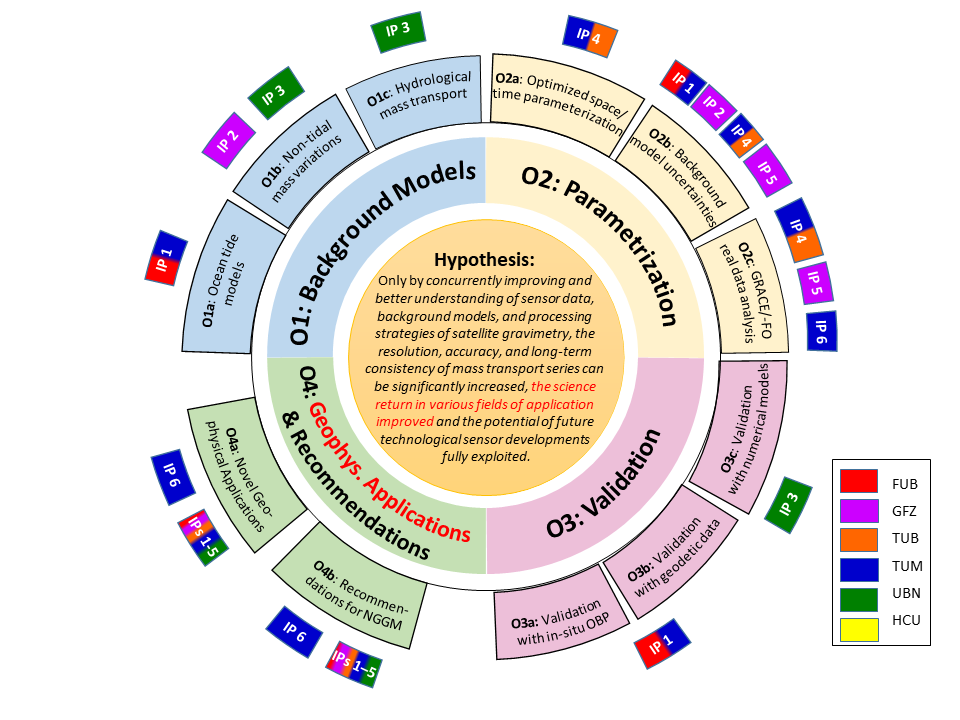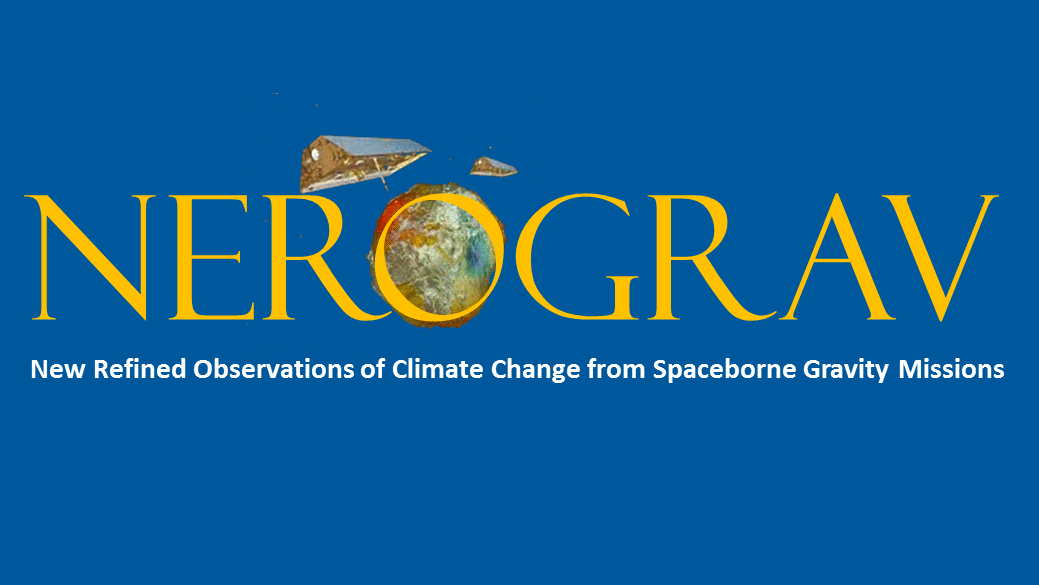The GRACE and GRACE-FO data are subject of numerous coordinated research projects and collaborative projects, which are funded by the German Research Foundation (DFG), among others. Scientists from universities and major research institutions are working closely together to quantitatively document, for example, the melting of polar ice sheets, sea level rise or changes in terrestrial water reservoirs as a consequence of man-made climate change over a long period of time. At the same time, the analysis methods or necessary correction models are also being improved in order to enhance the precision of the gravity field data and derived mass transports. Another main focus is on the preparation of future gravity field satellite missions such as the MAGIC double-pair mission.
Prof. Dr. Frank Flechtner, GFZ
Improved observations of climate change with satellite gravimetry: the NEROGRAV research group
Since 2019, the DFG has been funding the NEROGRAV (New Refined Observations of Climate Change from Spaceborne Gravity Missions) research group with the participation of the Technical University of Munich, the University of Bonn, the HafenCity University Hamburg, and the Freie Universität and Technische Universität Berlin. Together with the GFZ, the scientists are developing new methods and modelling approaches in order to be able to evaluate the data obtained by the GRACE and GRACE-FO missions even more precisely. The aim is to establish innovative geophysical applications of mass transport time series and to derive detailed recommendations for the design of future gravity field missions.
Examples are a) the development of improved ocean tide models including their error characteristics, b) an improved parameterisation and stochastic modelling of Level-1 instrument data (accelerometer, intersatellite link, GPS) or c) the calculation of daily or near-real-time gravity field models for e.g. improved flood forecasting.
A connecting element for individual projects: The central hypothesis

The central hypothesis of the research group is that only through simultaneous improvements in the most important sensor data, geophysical background models and gravity field processing strategies the resolution, accuracy and long-term consistency of satellite-based mass transport time series can be further improved. These improvements will then lead, on the one hand, to a higher utility value of existing GRACE and GRACE-FO satellite data and, on the other hand, to the full activation of the application potential of improved sensor technologies of future gravity field missions such as NGGM (Next Generation GravityGravity is also known as the force of gravity or mass attraction. Gravity is the force that two or more bodies exert on each other due to their mass. The best-known gravitational force is the Earth's gravitational pull. It causes bodies on earth to f... Mission) and MAGIC (Mass-Change and Geosciences International Constellation). To this end, scientists from the six participating institutions are working on a total of six individual cooperation projects (Fig. 1). The work is complemented by the expertise of Mercator Fellows integrated into the research group as well as other international colleagues who are invited to the annual status meetings in order to provide independent feedback on the work carried out or planned.
Results: Data sets, dissertations, specialist articles - and an autumn school
A key result of NEROGRAV is improved data sets from and for GRACE/GRACE-FO at different processing levels, which will be made available to the international research community in a timely manner. These include, for example, improved tidal models, a new version of the atmospheric-ocean background model AOD1B and stochastic models for various instrument error sources. A total of four dissertations had already been completed by the end of 2023, and further theses are nearing completion. In addition, 22 scientific articles have already been published in the first few years. However, an important element of the research group is also the direct transfer of knowledge to young scientists at other institutions: at the one-week online autumn school in October 2020, the latest findings on the processing of mass transport time series were passed to more than 30 international doctoral students and young post-docs in order to contribute to an improved application of GRACE/GRACE-FO observations in other regions of the world. A further training course, then in person, will take place in spring 2025.
Further information
- Homepage of the NEROGRAV research group: https://www.asg.ed.tum.de/iapg/nerograv/
- Data publications of the NEROGRAV research group: https://dataservices.gfz-potsdam.de/portal/?q=nerograv*
